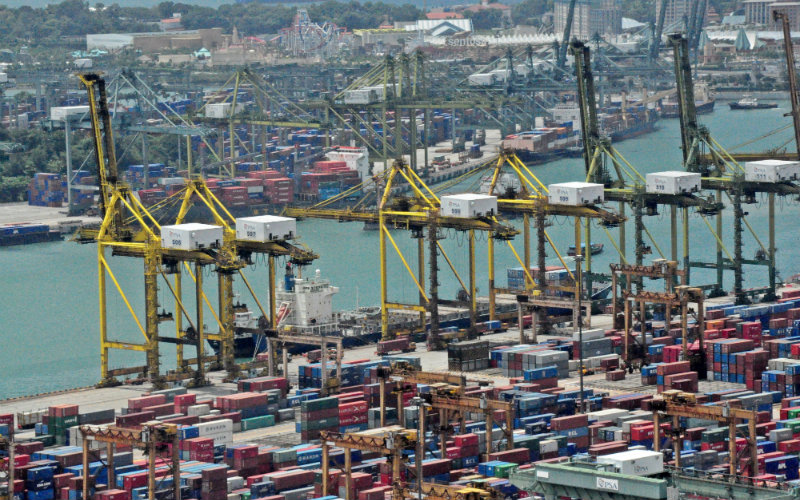Three more berths at Tuas Port will start operations by year-end, bringing the total number of berths open there to five as the authorities gradually increase operations at the mega port.
The Ministry of Transport (MOT) on Sunday (Aug 21) made the announcement together with Prime Minister Lee Hsien Loong’s National Day Rally, where he said Singapore’s decision to press on with its transport infrastructure projects – Changi Airport and Tuas Port – sends a clear signal to the world that the country is charging ahead after the Covid-19 pandemic.
The berths that will open are in Tuas Port Phase 1, which has 21 deep-water berths that can altogether handle 20 million twenty-foot equivalent units (TEUs), a unit of measurement for containers.
Their opening is part of the authorities’ ongoing efforts to increasingly operationalise Tuas Port, which will be fully completed in the 2040s.
Over the years, container port operator PSA is expected to move all its operations at Tanjong Pagar, Keppel and Brani terminals to Tuas by 2027, and from Pasir Panjang Terminal by the 2040s, freeing up prime waterfront land.
By then, Tuas Port will have a full capacity of 65 million TEUs a year, 1.5 times Singapore’s current capacity.
PM Lee, in his speech, said Tuas Port is “up and running”, and that the move to Tuas has already started, with all container operations in Tanjong Pagar already moved.
He said this forward thinking allows Singapore to better tackle the pandemic. The empty container yards in Tanjong Pagar meant isolation and recovery facilities for Covid-19 patients could be put up there during the outbreak.
When needed, berths can also be opened at Tuas Port to help Singapore cope with increased container volumes. The first two berths there were opened in December last year during the supply chain crisis, when delays and closures at other ports caused more containers to be stuck here, and more storage space was needed.
“While ports in other countries experienced closures, severe congestion and long delays, our port remained opened 24/7 throughout… In fact, last year, Singapore handled a record high of 37.5 million TEUs. We kept our position as the world’s busiest transshipment hub,” he said.
“When fully completed around 20 years from now… we will have the world’s largest fully automated port, and that should make us a leading global player in the maritime space.”
Tuas Port will be fully automated and digitalised, using automated guided vehicles and artificial intelligence to coordinate operations, manage vessels and clear ports.
It should also achieve net zero emissions by 2050, MOT has said.
By electrifying vehicles, carbon emissions can be cut by about half.
The Tuas Maintenance Base Administrative Building has also been certified as super low-energy, using 58 per cent less energy than similar-sized buildings and generating enough solar energy to offset its electricity consumption. Land reclamation works for Tuas Port Phase 2 are in progress and planning for Tuas Port Phase 3 has begun. There are four phases in all, costing a total of $20 billion.







